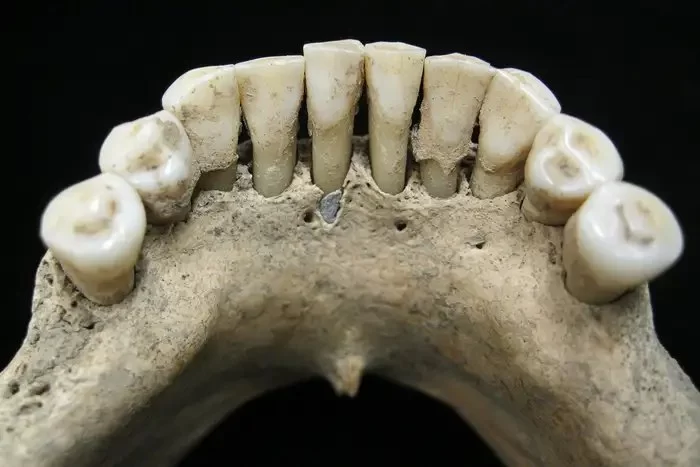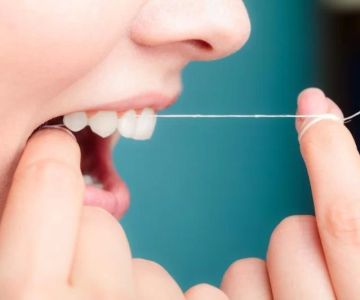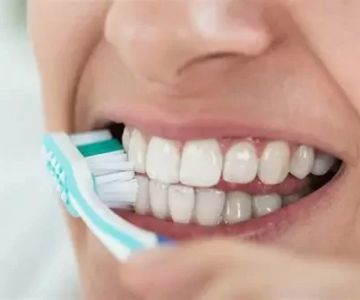
1. The Reality of Oral Hygiene in Medieval Times
When people think of the Middle Ages, they often imagine grimy faces, rotting teeth, and a lack of personal cleanliness. But was oral hygiene a thing in medieval times? Surprisingly, the answer isn’t a simple no. While dental care wasn't what we know today, historical evidence suggests that people in the medieval period did pay attention to their oral health in ways that might surprise modern readers.
Archaeological findings and ancient manuscripts from Europe—especially England, France, and Italy—reveal that oral hygiene, though primitive, was practiced. Toothpicks, herbal mouth rinses, and even early forms of toothpaste were part of daily routines for many, particularly among the wealthy and educated classes. For commoners, natural methods like chewing herbs or using cloth to rub the teeth were widespread.
2. Early Tools and Natural Remedies for Dental Care
2.1 Chewing Sticks and Cloths
Before toothbrushes, many people used fibrous sticks or small branches—often from aromatic trees like hazel or willow—to clean their teeth. These sticks were chewed until they frayed, then rubbed against the teeth to scrape off debris. In some areas, linen cloths soaked in salt or herbal oils were used for rubbing teeth and gums.
2.2 Herbal Mixtures and Powders
Medieval texts such as those by Hildegard of Bingen describe the use of sage, mint, rosemary, and vinegar as mouthwashes. Some people crushed pepper, salt, or dried mint leaves into powder and applied them with cloth. These powders served the dual purpose of cleaning and freshening the breath.
In fact, a popular 13th-century French medical manuscript recommended a mouth rinse of wine and herbs to kill mouth bacteria and soothe inflamed gums. Although lacking scientific backing, these remedies were passed down through generations, combining tradition with practical experience.
2.3 Oil Pulling and Vinegar Rinses
Though not widely documented in Europe, some regions practiced a form of oil pulling—swishing olive or walnut oil in the mouth. This is more commonly seen in Middle Eastern traditions but found some adoption during the Crusades. Vinegar, often infused with herbs, was also used to rinse the mouth and believed to strengthen the gums and prevent decay.
3. The Role of Diet in Dental Health During the Middle Ages
3.1 Less Sugar, Fewer Cavities
One of the reasons people in the Middle Ages may have had better dental health than expected is diet. Sugar, the leading cause of tooth decay today, was expensive and rare before the 16th century. The average medieval European diet was mostly bread, cheese, vegetables, and meat—foods that were coarse and often required significant chewing, which helped keep teeth cleaner naturally.
3.2 Coarse Foods as Natural Tooth Cleaners
Hard grains and fibrous vegetables acted as natural abrasives, scraping away food particles and plaque. This effect, combined with lower sugar intake, likely contributed to fewer cavities than we see in the sugar-heavy modern diet. Studies of medieval skulls support this, showing surprisingly well-preserved teeth, albeit with some wear from stone-ground flour.
4. Who Took Care of Teeth? Barbers, Monks, and Folk Healers
There were no dentists as we know them today. Instead, barbers and monks often doubled as rudimentary dental practitioners. Barbers, already skilled with blades, would perform tooth extractions, sometimes publicly. Monasteries served as centers of medical knowledge, where monks preserved and practiced dental remedies described in ancient texts.
4.1 The Barber-Surgeons
Barber-surgeons were infamous for performing tooth extractions. Their services were crude, painful, and often unsanitary. But they were sometimes the only option available. Their role was essential in emergencies, such as abscesses or rotten teeth causing infections. Bloodletting and herbal poultices often accompanied their dental procedures.
4.2 Monastic Medicine and Herbal Knowledge
Monks were among the most literate people of the time, keeping meticulous records of remedies. They cultivated herb gardens and often used salves, oils, and powders to treat oral issues. In places like Canterbury or Cluny, infirmaries attached to monasteries treated ailments including oral pain, using remedies like myrrh, clove oil, and thyme.
5. Stories from the Past: Historical Evidence of Dental Care
One of the most fascinating insights comes from the preserved remains of a medieval noblewoman buried in York, England. Her teeth showed signs of consistent wear—but very few cavities. Microscopic analysis found traces of mint and sage, indicating she may have used herbal rinses. This discovery sheds light on how even in times lacking modern science, people found ways to care for their mouths.
Another tale involves the infamous King Henry V, whose personal physician recorded treating the monarch’s gum inflammation using a warm rinse of vinegar, sage, and a tincture of rosemary. Whether it was effective or not, it reflects a clear understanding of oral discomfort and attempts to treat it.
6. Comparing Medieval and Modern Dental Practices
Of course, medieval dental practices pale in comparison to today’s standards. There was no fluoride, no knowledge of bacteria, and certainly no orthodontics. But in context, their resourcefulness was impressive. It reminds us that oral care has deep historical roots, even if it was largely trial and error.
Today, with access to professional dentistry, preventative care, and advanced treatments, we’re far ahead—but it's still fascinating to reflect on the ways medieval societies tried to preserve their smiles. For personalized guidance on modern dental health and services, visit Dentistry Toothtruth for expert recommendations tailored to your needs.







 Mortenson Family Dental4.0 (413 review)
Mortenson Family Dental4.0 (413 review) Nu Smile Aligner5.0 (1 review)
Nu Smile Aligner5.0 (1 review) GK Dental4.0 (175 review)
GK Dental4.0 (175 review) Carol A. Bahnemann, DDS5.0 (2 review)
Carol A. Bahnemann, DDS5.0 (2 review) Foothill Family Dentistry4.0 (41 review)
Foothill Family Dentistry4.0 (41 review) Corbin Dental at Oyster Bay4.0 (189 review)
Corbin Dental at Oyster Bay4.0 (189 review) The Importance of Oral Health Education During Pregnancy for a Healthy Pregnancy
The Importance of Oral Health Education During Pregnancy for a Healthy Pregnancy Best Tips for Brushing Your Teeth Properly for Healthy Gums: Essential Techniques for Oral Health
Best Tips for Brushing Your Teeth Properly for Healthy Gums: Essential Techniques for Oral Health Why Skipping Dental Checkups Can Lead to Bigger Oral Health Problems
Why Skipping Dental Checkups Can Lead to Bigger Oral Health Problems Advantages of Porcelain Dental Restorations
Advantages of Porcelain Dental Restorations How Can Diabetes Cause Tooth and Gum Problems? Preventing and Managing Oral Health Issues
How Can Diabetes Cause Tooth and Gum Problems? Preventing and Managing Oral Health Issues Healthy Habits for Promoting Good Oral Health and Hygiene: Tips for a Healthy Smile
Healthy Habits for Promoting Good Oral Health and Hygiene: Tips for a Healthy Smile